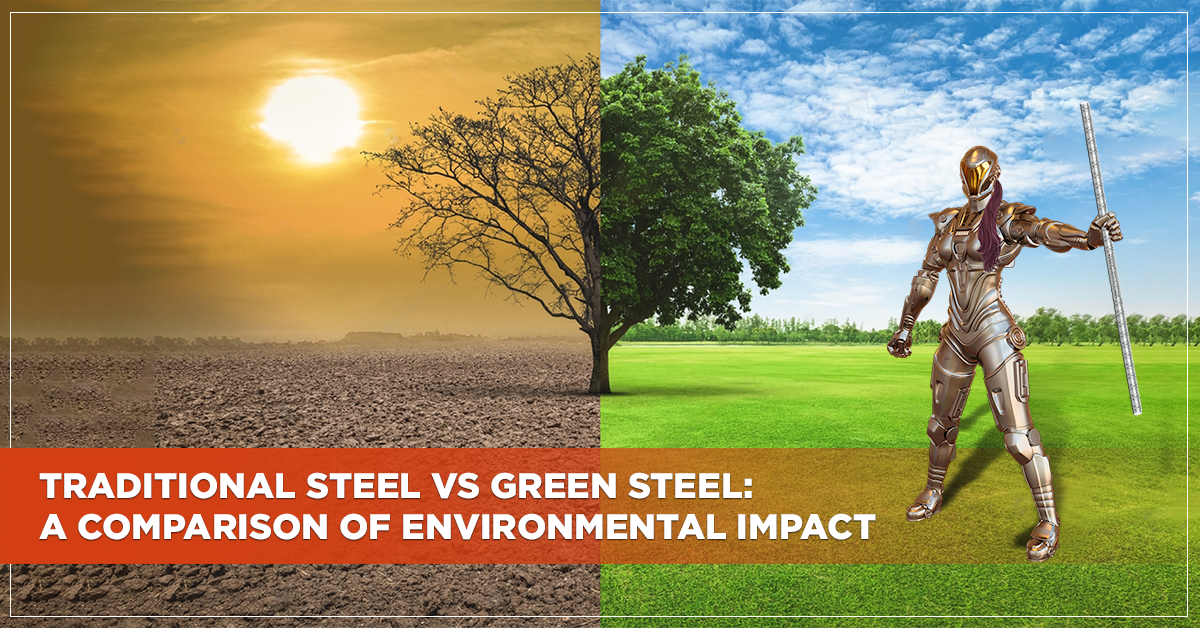
Steel is one of the most essential materials for modern society. It is used in every construction, but its production has a significant environmental impact. Traditional steel production is a major contributor to greenhouse gas emissions and other environmental problems. In recent years, there has been a push for the development of green steel as a more sustainable alternative. In this blog, we will compare the environmental impact of green steel and traditional steel.
Traditional Steel Production
Traditional steel production involves the use of coal and coke, which are burned to create high temperatures needed for smelting iron ore. This process results in significant emissions of greenhouse gases such as carbon dioxide and methane, as well as other pollutants like sulfur dioxide and nitrogen oxides. The production of steel accounts for about 7% of global greenhouse gas emissions, making it a major contributor to climate change.
Additionally, traditional steel production creates a significant amount of waste. Iron ore is extracted from mines, and this process can result in soil erosion, deforestation, and habitat destruction. The process of refining and purifying the iron ore creates a large amount of slag and other waste products, which can contaminate nearby soil and water sources.
Green Steel Production
Green steel, also known as sustainable steel, is produced using renewable energy sources such as solar, wind, and hydropower. It uses electric arc furnaces instead of the traditional blast furnace, which eliminates the need for coal and coke. The electric arc furnace is powered by electricity, which can come from renewable energy sources.
Green steel production has several advantages over traditional steel production. Firstly, it produces significantly fewer greenhouse gas emissions. In fact, some estimates suggest that green steel production can reduce emissions by up to 95%. Additionally, green steel production does not produce the same level of waste as traditional steel production.
Comparison
When comparing the environmental impact of green steel and traditional steel, it is clear that green steel is the more sustainable option. Green steel production produces significantly fewer greenhouse gas emissions, which is crucial for combating climate change. Additionally, it creates less waste and does not rely on non-renewable resources like coal and coke.
In conclusion, the development of green steel represents an important step towards a more sustainable future. The environmental impact of traditional steel production is significant, and the use of green steel offers a more sustainable alternative. While green steel production is not without its challenges, it has the potential to significantly reduce greenhouse gas emissions and waste products associated with traditional steel production. As we continue to push towards a more sustainable future, the development of green steel will play an important role in achieving this goal.
Sunvik Steels is a leading manufacturer of green steel that is committed to sustainability and protecting the environment. Our TMT bars are “Forged from the power of nature” and made using renewable energy sources such as solar, wind, biogas, and captive power. We are also proud to be at the forefront of sustainable steel manufacturing with our zero solid waste disposal system. By adopting a circular economy model, we reuse and recycle all our waste products, minimising our environmental footprint. Choose Sunvik Steels for eco-friendly and sustainable steel.





